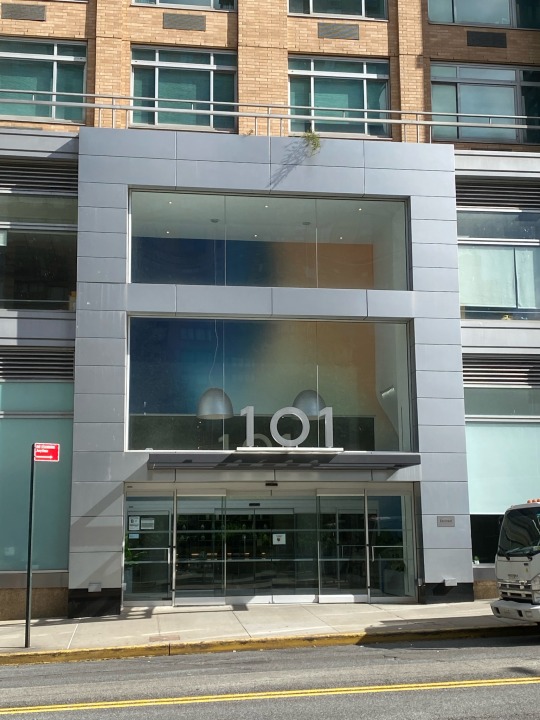#build mobile app
Text
Best Mobile App Builder For eCommerce Platform
MageNative is the best mobile app builder in the market for your eCommerce platform. The best thing is, it is a no-code mobile app builder. We bring to you native apps that are built to scale and enhance your business, bringing aesthetics and simplicity of design in the easiest and smartest way possible.
#mobile app#mobile app builder#app builder#native app#app maker#build mobile app#app mobile#mobile builder#mobile app maker#shopify mobile app#no code mobile app builder#ecommerce app builder#create mobile app
3 notes
·
View notes
Text
Retain Customers through Mobile app
Focus on User Experience UX:
Simple navigation: Ensure a user-friendly interface with clear menus and easy access to key functionalities
Fast loading times: Optimize app performance for smooth navigation and quick product browsing.
Visually appealing design: Maintain an attractive design that reflects your brand identity.
Engage Your Customers:
Personalized recommendations: Suggest products based on browsing history or buyer behavior.
Push notifications: Send targeted push notifications, new arrival alerts.
In app rewards and ramification; Offer points, badges, exclusive rewards for app activity to keep users engaged.
In app chat or client support: Provide easy approach to concentrate for inquiries or troubleshooting.
Offer Value and Incentives-
Loyalty programs: Reward customers with some points as well as discounts, or exclusive offers..
Early approach to sales and promotions: Give app users a sneak peek at new products or upcoming sales. Mobile only coupons and discounts, incentive app usage with exclusive deals.
Build a Community:
User reviews and ratings- Encourage user reviews and crossway ratings for proof and trust.
Social media integration: Allow users to share their purchases or experiences on social media.
Contests and giveaways: Run contests or giveaways inside the mobile app to improve brand awareness.
Continuously Improve:
Track user behavior: Use app analytics to learn how users interact with the app and identify areas for improvement.
A/B testing: Test different app features and functionalities to see what goes best with your users.
Regular updates: Release firm updates with new features, bug fixes, and executing enhancements.
By prioritizing user experience, fostering engagement as well offering value, you could build a mobile app that keeps customers coming back for more.
Remember, the key is to create a valuable and convenient experience that keeps your brand top-of-mind and encourages repeat purchases within the app.
1 note
·
View note
Text
Check rank of your website.
#website#domain#marketing#ranking#seo services#adsense#build mobile app#search engine optimization#digital marketing#digital marketing agency#marketing agency
0 notes
Text
Why to Choose Kotlin in 2023 to Build Mobile Apps Faster?

Kotlin is a programming language introduced by JetBrains, the official designer of the most intelligent Java IDE, named Intellij IDEA. This is a strongly statically typed language that runs on JVM. At Google I/O 2019, we announced that Android development will be increasingly Kotlin-first, and we’ve stood by that commitment.
Kotlin is an open source programming language that combines object-oriented programming and functional features into a unique platform.
What’s new in Kotlin 1.8.0
New experimental functions for JVM: recursively copy or delete directory content
Improved kotlin-reflect performance
New -Xdebug compiler option for better debugging experience
kotlin-stdlib-jdk7 and kotlin-stdlib-jdk8 merged into kotlin-stdlib
Improved Objective-C/Swift interoperability
Kotlin Multiplatform
Compatibility withGradle 7.3
Kotlin/Native
Kotlin 1.8.0 includes changes to Objective-C and Swift interoperability, support for Xcode 14.1, and improvements to the CocoaPods Gradle plugin:
Support for Xcode 14.1
Improved Objective-C/Swift interoperability
Dynamic frameworks by default in the CocoaPods Gradle plugin
Kotlin Multiplatform
Kotlin Multiplatform is in Beta. It is almost stable, but migration steps may be required in the future. We’ll do our best to minimize any changes you have to make.
Android and iOS applications
Sharing code between mobile platforms is one of the major Kotlin Multiplatform use cases. With Kotlin Multiplatform Mobile, you can build cross-platform mobile applications and share common code between Android and iOS, such as business logic, connectivity, and more.
Check out the Get started with Kotlin Multiplatform Mobile and Create a multiplatform app using Ktor and SQLDelight tutorials, where you will create applications for Android and iOS that include a module with shared code for both platforms.
How Kotlin Multiplatform works
Code sharing between platforms
Share code among all platforms used in your project. Use it for sharing the common business logic that applies to all platforms.
Share code among some platforms included in your project but not all. Do this when you can reuse much of the code in similar platforms:
Few Things Make Easy to Use Kotlin/Native.
Jetpack Componse
Kotlin Coroutines
Asynchronous Flow
App Architecture
Material Design
Android KTX
Safer code
Support for Xcode 14.1
The Kotlin/Native compiler now supports the latest stable Xcode version, 14.1. The compatibility improvements include the following changes:
There’s a new watchosDeviceArm64 preset for the watchOS target that supports Apple watchOS on ARM64 platforms.
The Kotlin CocoaPods Gradle plugin no longer has bitcode embedding for Apple frameworks by default.
Platform libraries were updated to reflect the changes to Objective-C frameworks for Apple targets.
Kotlin/JS
Kotlin 1.8.0 stabilizes the JS IR compiler backend and brings new features to JavaScript-related Gradle build scripts:
Stable JS IR compiler backend
New settings for reporting that yarn.lock has been updated
Add test targets for browsers via Gradle properties
New approach to adding CSS support to your project
Compatibility guide for Kotlin 1.8.0
Kotlin 1.8.0 is a feature release and can, therefore, bring changes that are incompatible with your code written for earlier versions of the language. Find the detailed list of these changes in the Compatibility guide for Kotlin 1.8.0.
Kotlin for beginners you’ll learn
The Final Words
As a business owner, you must be knowing that one of the key factors that determine the success of an app is the programming language. As such, we have laid down solid cases for Kotlin to choose the one that best suits your requirements and helps you build powerful Mobile apps faster. You can also hire Mobile app developers from 9series to build future-ready native Mobile applications and accelerate your development journey like never before.
SB - 9series
#kotlin#android#Android app development#mobile app development#hire app developer#hire mobile app developer#Xcode#Swift#create mobile app#build mobile app
0 notes
Photo

Build a mobile app within a day using #Web2appz
Visit: https://web2appz.com/
#web2appz#build mobile app#app builder#website to mobile app#website into mobile app#website 2 mobile app#web to mobile app#free website to app
0 notes
Text
Another issue with captions is when they block important/informational text on the screen (ex. What someone's profession/role is during an interview) and I have to rewatch each section without the captions to see who everyone is
#wrenfea.exe#captions#hoh#auditory processing disorder#adhd#deaf#accessibility#or gags with text like the buildings in bobs burgers#some apps used to let you move the captions but i dont think it works on mobile
47 notes
·
View notes
Text
Screw Frenzy ASMR Home or Screw Frenzy ASMR by Digital Kingdom PTE.LTD. - Basically game developers stole this video from a YouTuber or Tiktoker who does speed build of The Sims 4 and used it for their ads, implying that THIS is what their game looks like. I'm really pissed.
One star as rate on Google Store isn't enough to shame this people. Pathetic.
Please, if you recognize the video and can tell me who is the oroginal creator, I would be glad. Feel free to report this to him/her/them. They need to know some shady Corp is using their content to scam and fraud people. This is both intellectual property right violation than false advertisement.

#vavuskapakage#mobile games#fake ads#fake advertising#fake game#Screw Frenzy ASMR Home#the sims 4 build#the sims 4 speed build#the sims 4 buy mode#the sims 4 cc#the sims 4 gameplay#false advertising#mobile game ads#mobile gaming app#google store#scams#mobile ads#scam alert#internet fraud#ts4 speed build#sims 4 speed build#ts4 youtube#sims 4 youtube#the sims 4 youtube#simtok#simtuber#simstube#simstok
4 notes
·
View notes
Text
Made a random ghosts episode generator here (UPDATE October 2023: Season 5 has been added)
If you use this app you can toggle on and off slices you may not want to use.
Anyway see the reblogs to follow my random rewatch ready for Friday and I'll be reviewing each episode. (Thanks to @baynton and @gethisshithumptyfuckingdumptied for the idea.)
#bbc ghosts#six idiots#Episode reviews.#You may have to download the app#I'll test it now#Tried to build one in excel but idk how to make it both easy to use and mobile friendly yk?#Anyway
87 notes
·
View notes
Text
did somebody say “hey I want another cobbled-together powerpoint for one of Rabbits’ WIPs” ?!
No. but just in time for October, here it is!
(all information is subject to change at any time)







prequel comic
playlist
#weeping and gnashing my teeth that the mobile app ruined the format of Lux's pictures#the playlist says Nano because the full Vibe/Theme playlist is 6 hrs long and the full Hollowick playlist is...17 hrs long#WIPs#mobile#x#also if you read the prequel comic DON'T @ ME unless it's to say 'your mind.'#because who knows how hard the amateur shows#I realized the other night that Maripaz Villar is a genius. the woman is a genius. why?#she doesn't use panels. so her comics work perfectly for Webtoon format#and if she ever wants to publish them in physical book form she can arrange them HOWEVER SHE WANTS#yeah it takes away some of the creativity but the more I read Webtoons the more I realize#it's not really the destination for a magnum opus#it's a good place to introduce your story to a ready-made audience and then build from there
10 notes
·
View notes
Text
Mobile Navigation
The pages will open up browser pages, so I reccomend desktop for those, but this should allow easy access to tags.
If there’s anything you think this blog is missing, whether it’s a tag I could use or a page to compile things, feel free to let me know.
A ⚠ next to a tag means it could contain spoilers, so enter at your own risk. You can feel free to block these tags in order to avoid spoilers.
Books
Covers + Chapter Illustrations | ⚠ Snippets + Cut Content
#book news | #book promo | ⚠ #sneak peeks | #book art | #cut content
#silverborn
Movie
Movie Info
#movie news | #movie cast | #movie crew | #behind the scenes | #movie promo | ⚠ #movie interviews
Jess
Interviews + Q&As
#jess news | #jess interviews | #q&a
Misc.
Official Newsletter | Nevermoor Wiki | Wundrous Society Discord
#nevermoor merch | #fan projects
Blog Related
#asks | #non news
#this will constantly be edited as I continue building up this blog#I recommend viewing this blog from desktop bc mobile is wonky with pages but I understand that some folks primarily use the tumblr app#can't share private posts so I look forward to when this eyesore gets buried beneath other stuff
9 notes
·
View notes
Text
i dunno if it happened to just me, but suddenly getting logged out of twitter is pretty spooky, not gonna lie 🧍
#i’m 90% sure it’s a mobile app thing#but considering how elon is like. as a person#you never know these days#the thing has the stability of a building during an earthquake
2 notes
·
View notes
Text









Since moving into the new apartment, a brisk chill had finally overtaken the awful heat, and Kurt exchanged his laid-back summer attire for toasty scarves and warm, woolen mittens, as well as his beloved fitted sweaters. The trees completed their seasonal transformation. From his window, Kurt could see how the leaves on the trees in the park across the street adopted their rustic, fiery hues, and along with the changing of the season came the festive decorations. —just a floor away
9 years ago I started writing a fanfic that takes place at an actual, real life location in NYC. It feels silly, but being here somehow feels like a full circle moment on my kurtofsky journey. Not to mention a 2,426 mile journey. I know @karofsky and I probably got a lot of weird looks as we took photographs of a random apartment building and children’s park (some of which where I am crying), but it makes me emotional thinking about all the friends I have made the past 10 years thanks to these boys. All the amazing people who have read and commented on my fic and have stuck with it through all of my hiatuses. I can’t wait to go back home and continue to write having scoped out the location after all these years. I honestly never thought this would happen. Hell, it was not something I ever considered. I will never not be in love with kurtofsky. Nothing in my life has or will impact me in the way Dave and Kurt have. ♥️
#kurtofsky#fic: just a floor away#Dave voice: I’m so happy right now#Robs: do you want to touch the building? Me in tears: yes ;_;#It makes me extra emotional being here with robs… the best illustrator#Also I am posting on mobile tumblr instead of the app so hopefully this formats okay
13 notes
·
View notes
Photo

Rapidly build the mobile app with #web2appz web2app #builder
Visit: https://web2appz.com
#web2appz#web2app#web2app builder#web 2 app builder#build mobile app#mobile app builder#app builder#build an app#free web2app
0 notes
Text
Pavlo Pikulin, Founder & CEO of Deus Robotics – Interview Series
New Post has been published on https://thedigitalinsider.com/pavlo-pikulin-founder-ceo-of-deus-robotics-interview-series/
Pavlo Pikulin, Founder & CEO of Deus Robotics – Interview Series
Pavlo Pikulin is the founder and CEO of Deus Robotics, which has developed an AI platform that connects and enhances the intelligence of warehouse robots from any manufacturer. The company also offers AI-powered robots that cover 90% of warehouse automation needs — and counting. With over 22 years of experience in AI and 6 years in robotics, Pavlo serves as an Expert on the Artificial Intelligence committee under Ukraine’s Ministry of Digital Transformation.
Can you share your journey in AI and robotics, and what inspired you to start Deus Robotics?
It all began with my dad, who’s always been a tech enthusiast. Even before I was born, he got me a personal computer — pretty rare in my hometown back in 1989.
When I was five, I wrote my first computer program. The idea of giving a task to a machine and watching it execute was absolutely fascinating to me.
At seven, I sold my first website for $20. Soon after, I started building and selling computers. By thirteen, I had written a program to bypass a captcha in a computer game, which later evolved into an automatic number-plate recognition system.
By fifteen, I was convinced that the future was all about robotics.
This realization set my path towards robotics and AI. However, at that age, I didn’t have the means to start my own robotics company, so I took a bit of a detour. At nineteen, I launched a game studio which grew into a global company with 60 million users worldwide. By 2021, we had 700 employees, and some of our games became the top downloads in their genre in the US.
But robotics was always on my mind and in my heart. I’ve always believed the world would be better if robots could handle all the tough, mundane, or dangerous tasks. By late 2017, I had saved enough to finally bootstrap my own robotics company and make that vision a reality.
It took me a year to do all the research in robotics I needed to start. After that, I gathered a team of incredibly talented engineers and programmers — some old friends, others new faces — and we launched Deus Robotics in early 2019. This past summer, Deus Robotics was shortlisted for Logistics UK’s Logistics Awards, Robotics & Automation Awards, and Supply Chain Excellence Awards USA.
What lessons did you carry over from your 15 years in the gaming industry to robotics and AI?
Working on games has given me valuable experience in many key areas, and it’s been rewarding to see how these skills apply to robotics.
Virtual Worlds for Robotics
Virtual worlds are a game-changer in robotics, offering a quicker and more efficient way to test ideas without waiting months for a hardware prototype. Instead of spending time and resources on physical prototypes, you can experiment in a virtual environment. Creating these virtual worlds is a lot like designing a game, where robots interact with their surroundings — this is where my game development experience really comes in handy.
Algorithm Transfer
When we were developing algorithms for robot path planning, as a team, we tapped into our experience from creating similar algorithms in games for character navigation. In our strategy games, hundreds of characters had to navigate through cities with roads and buildings — just like robots in our systems. This made transferring our path-planning expertise to robotics feel seamless and natural.
Complex Software and Analytics
Robots, much like games, are built on complex software. Developing a world-class game involves creating secure payment systems, social features like chat and groups, competitive elements, and a detailed virtual world with countless mechanics. One of our games had over 300 functional windows — more than you’d find in most banking apps! Games also handle massive loads, with millions or even billions of users performing countless actions, and this experience provides valuable insights for warehouse robotics.
Another crucial aspect is analytics. In games, we had to quickly and efficiently analyze user actions, managing high volumes of data. The same is true for robots, which continuously send vast amounts of data that need robust processing and analysis systems. Additionally, creating AI agents in games to engage players is similar to programming robots, as both involve crafting intelligent, responsive behavior.
In short, if you can build and manage a game development team, you’ve got what it takes to lead a robotics team as well.
How has your role in the Artificial Intelligence Committee under Ukraine’s Ministry of Digital Transformation influenced your work at Deus Robotics?
The Committee’s goal is to advise government authorities on AI, including robotics. I joined to provide expertise specifically in robotics and to consult on government requests. We’re also focused on education, regulations, and pilot AI projects in Ukraine.
Through my work with the Committee, Deus Robotics found a way to expand our passion for advancing robotics in Ukraine beyond just warehouse automation. This allows us to make a broader impact.
Could you explain the unique AI brain developed by Deus Robotics and how it enhances the intelligence of warehouse robots?
Our robot control software, dubbed AI brain, includes key technologies:
1. On-Robot Systems:
A system that collects and analyzes data from all the robot’s sensors, helping it understand its surroundings, determine its location, and make decisions.
A control system that manages all robot mechanisms, such as manipulators, motors, lidars, and cameras, to execute the robot’s decisions.
A 3D recognition system that identifies obstacles using 3D cameras and a lidar recognition system that interprets what the LIDAR detects.
2. Centralized Management Platform:
Our AI platform connects all robots via Wi-Fi, coordinating their actions and enabling centralized communication.
In warehouses, our centralized system is crucial. It prevents collisions by tracking each robot’s exact location in real-time, allowing them to move quickly and safely.
This centralized system also integrates seamlessly with the warehouse management system, making it a key advantage and streamlining robot management.
Besides being connected, our robots are also getting smarter. Thanks to the adapters for different robots, our system can integrate robots from various manufacturers, enabling them to share information and coordinate tasks.
Previously, robots could only coordinate with other robots from the same manufacturer. Now, they can exchange data and work together across different brands.
What sets Deus Robotics apart from other companies in the warehouse automation industry?
Unlike other warehouse robotics companies, we’ve developed the heart of what makes robots truly effective: their brain. Our AI-powered brain connects with robots from any manufacturer, including our own, turning even the simplest robots into smarter, more capable machines. This kind of interoperability is something special in the industry.
This is especially important because, typically, robots from different manufacturers don’t play well together. Each robotics provider only covers a small slice of automation needs, leaving warehouses to choose from too many options. Each provider also requires costly and time-consuming integration, making it hard to switch if you want to try something new. Plus, when robots from different providers can’t connect or be centrally managed, it complicates operations and limits your ability to scale.
That’s where we come in. Our system makes it easy to bring as many robots as you need under one roof, all managed through a single, user-friendly platform.
With our solution, you get:
All automation needs covered under one system.
A single integration for all current and future providers, eliminating repeated integration costs and allowing you to switch providers as needed.
An easy-to-use management system for all current and future robots.
AI-enhanced, smarter robots that work together seamlessly (what’s important, our system can connect with humanoids, too).
Ongoing training and support for warehouse operators to ensure smooth operations.
And the best part? Our solution is truly all-in-one. We offer robots that tackle 90% of logistics tasks (and counting), paired with our AI platform that ties everything together. With our system, you can easily connect robots from any provider, simplify your operations, and scale your automation like never before. This is particularly important as only 20% of warehouses are automated.
How does Lidar technology enhance the navigation capabilities of your AGVs compared to traditional methods?
When our robot spots a floor tag, it navigates with pinpoint accuracy — within 1mm. But when the tag isn’t in view, accuracy can drop to around 20mm. That’s where LIDAR comes in, helping to keep navigation precise even between markers.
LIDAR adds another layer of information, which we combine with data from tags and gyroscopes. Each source gives us different insights with varying accuracy. Our specialized system merges all these inputs to pinpoint the robot’s position with high precision. The more accurate the data, the better the robot navigates, and precise positioning is key to smooth and effective robot movement.
Could you describe the role and benefits of your Robot as a Service (RaaS) and Software as a Service (SaaS) models for businesses?
Buying robots requires significant capital investment, leading to a payback period of one to three years. This also ties up the client’s operating funds and increases capital expenses.
RaaS (Robots as a Service) is a game-changer for businesses. It eliminates the need for capital investment, relying instead on operational expenses. The payback begins in the first month, thanks to the immediate boost in productivity. Instead of needing 2-5 times more people to achieve the same productivity, robots enhance the efficiency of existing staff—at a lower cost than hiring additional workers.
Plus, RaaS reduces risk. There’s no need to freeze investments, and expenses shift from CAPEX to OPEX.
What are the advantages of QR Code Navigation in AGVs, and how does it compare to Lidar?
Automated guided vehicles (AGVs) follow fixed routes, navigating via floor tags instead of LIDAR, and can’t deviate from their path. In contrast, our autonomous mobile robots (AMRs) use 3D LIDAR scans for flexible navigation without relying on floor markers.
In what ways do Deus Robotics’ solutions address the current challenges faced by warehouse logistics and the 3PL industry?
Currently, we offer a solution that transports goods from point A to point B, which is especially appealing to fulfillment centers. However, the need to move goods exists in any warehouse — whether it’s in manufacturing, healthcare, automotive, or retail. In the future, we plan to expand our product line to include robots that can handle tasks like packing, loading and unloading trucks, unpacking, and picking. We’re already working closely with robot manufacturers to integrate their products into our lineup.
Another challenge we’re addressing to make warehouses more efficient is providing a unified system for managing robots — a single integration, management, and enhancement point. Our clients don’t need to deal with multiple robot platforms. They only need to integrate with us once and can then use any robots they choose. While our current selection of robots is limited (we have 15 models to date), we’re constantly working to expand it.
What advancements do you foresee in the integration of AI and robotics in warehouse automation over the next 5-10 years?
One of the biggest challenges we face is figuring out the best way to automate each warehouse. Even though warehouses perform similar tasks, they differ in the details — like processes, staff, the types of goods they handle, and their goals. Some aim for maximum efficiency, others for cost-effectiveness. Planning the right automation solution and setting up the best business processes takes a lot of time and effort from experts. I’m convinced that AI will soon help us design warehouse automation in just seconds, making the process much smoother and more efficient.
Another exciting development is the rise of specialized robots designed for specific tasks. While the first robots were built for general use, as automation grows, we’ll see more robots tailored to unique needs. For example, inventory robots are just starting to appear since most warehouses only need one or two.
Humanoid robots are also on the horizon. These versatile robots will be able to handle tasks much like humans, thanks to advances in AI.
AI is also getting better at helping people with their tasks, like smarter voice assistants that can offer guidance. Plus, AI can optimize warehouse operations by analyzing data and improving efficiency. With access to digital warehouse data, AI can quickly identify and fix issues, making everything run more smoothly.
Looking at the bigger picture, AI will also improve how different warehouses work together, along with suppliers and logistics partners. This includes better scheduling, moving goods efficiently, and predicting what will be needed next.
All in all, AI and robotics are not just tools for automation — they’re the keys to unlocking a smarter, more connected future for warehouses and beyond.
Thank you for the great interview, readers who wish to learn more should visit Deus Robotics.
#3d#agents#ai#AI AGENTS#ai platform#AI-powered#algorithm#Algorithms#amp#Analysis#Analytics#apps#artificial#Artificial Intelligence#as a service#automation#automotive#autonomous#autonomous mobile robots#banking#Behavior#Bootstrap#Born#Brain#brands#Building#buildings#Business#Cameras#CEO
0 notes
Text
Why Cross-Platform Mobile Application Development is the Future of App Building?

In the ever-evolving world of mobile technology, businesses face a growing demand to deliver exceptional apps quickly and efficiently. With users scattered across multiple platforms like iOS and Android, the challenge of reaching a broad audience without sacrificing quality or performance has led to the rise of cross-platform mobile application development. This method has gained significant momentum as the future of app building, offering numerous advantages over traditional native development.
Let’s dive into why cross-platform mobile development is set to dominate the app development landscape in the years ahead.
1. Reduced Development Costs
One of the most compelling reasons cross-platform development is the future of app building is the significant reduction in costs. Traditional app development requires building separate codebases for iOS and Android, often doubling the budget. In contrast, cross-platform frameworks like React Native, Flutter, and Xamarin enable developers to create one codebase that works seamlessly across multiple platforms.
This unified approach allows businesses to save on developer hours, reduce maintenance costs, and invest the savings into other areas such as marketing, user acquisition, or further app enhancements. For small to medium-sized businesses, startups, or even large enterprises, this can lead to significant cost savings without compromising on app quality.
2. Faster Time to Market
In a fast-moving digital landscape, time is a crucial asset. Businesses that can deliver their app to market quicker have the advantage of capturing user attention earlier, gaining critical feedback, and adapting to user needs faster than competitors.
Cross-platform development frameworks streamline the app-building process by eliminating the need to write two separate codebases. A single codebase allows developers to deploy apps on both Android and iOS platforms at the same time, drastically reducing development timelines. Faster time to market means businesses can stay agile, capitalize on trends, and respond to user demands efficiently.
3. Wider Audience Reach
Native app development locks businesses into a specific platform, often requiring additional investments to reach users on other platforms. This limits growth and forces developers to prioritize one operating system over another, resulting in missed opportunities.
With cross-platform mobile application development, businesses can reach a much wider audience from day one. By catering to both iOS and Android users simultaneously, companies maximize their app’s visibility and accessibility, gaining a competitive edge. A broader reach also means more downloads, faster user growth, and better app store rankings.
4. Consistency Across Platforms
Ensuring a consistent user experience (UX) across devices is critical for app success. When developing native apps for multiple platforms, maintaining uniformity in design and performance can be a complex and resource-intensive process.
Cross-platform development offers a solution by ensuring that apps have the same look, feel, and functionality across platforms. Frameworks like Flutter and React Native allow developers to design UI elements that behave consistently across different operating systems. This consistency ensures a cohesive brand experience for users, which in turn leads to improved user satisfaction and retention.
5. Access to Advanced Tools and Features
In the early days of cross-platform development, one of the major concerns was the lack of access to platform-specific features like cameras, GPS, and push notifications. However, with the rapid advancements in cross-platform frameworks, these limitations have largely been addressed.
Today’s cross-platform development tools offer access to native features, allowing developers to integrate advanced functionality such as biometrics, augmented reality, and native UI components without compromising on performance. This flexibility makes cross-platform apps almost indistinguishable from native apps, further pushing businesses toward adopting this approach.
6. Easier Maintenance and Updates
Maintaining two separate codebases for native apps can become a logistical nightmare when it comes to rolling out updates or fixing bugs. This often results in delayed releases and inconsistent app performance between platforms.
With cross-platform development, maintaining and updating apps is a much more streamlined process. Since the app shares a single codebase, updates can be made once and deployed across all platforms simultaneously. This ensures that users on all devices benefit from the latest features and improvements at the same time, keeping the app relevant and bug-free.
7. Growing Ecosystem of Frameworks
The ecosystem surrounding cross-platform development is growing rapidly, with new tools, libraries, and frameworks being introduced regularly. Established players like Flutter, React Native, and Xamarin continue to evolve, while newer frameworks bring fresh innovations to the space.
This vibrant ecosystem not only makes cross-platform development more efficient but also provides developers with the flexibility to choose the best tools for their project’s specific needs. Whether focusing on performance, UI/UX, or quick deployment, the variety of frameworks ensures that businesses can build robust, future-proof applications.
8. The Future is Cross-Platform
As user preferences and technologies continue to evolve, so does the app development landscape. Cross-platform development is uniquely positioned to meet the growing demand for cost-effective, high-performance, and scalable solutions. Its ability to deliver apps faster, maintain consistent user experiences, and reach broader audiences will drive its adoption as the future of mobile app building.
Whether you're a startup looking to break into the mobile space or an established business aiming to optimize your mobile strategy, cross-platform development is the way forward.
Partnering with a cross-platform mobile app development services provider can help ensure your business leverages the best tools and strategies to succeed in this ever-competitive market.
#Cross Platform Apps#Mobile App Development#Cross Platform Mobile#App Development Tools#Hybrid App Development#Future of App Building#Cross Platform Frameworks#Cross Platform Development#Mobile App Strategy#Cross Platform Mobile App Development Services
0 notes